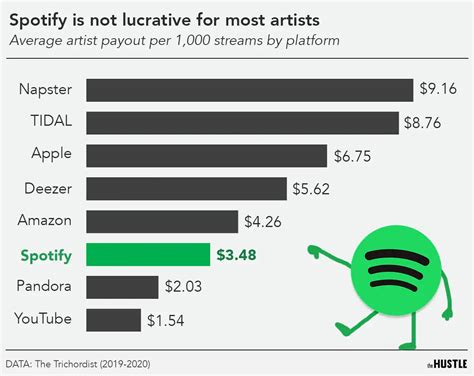The announcement that Spotify is increasing its subscription prices in the US has ignited a fervent discussion among music enthusiasts and tech analysts alike. One of the major points of contention revolves around the long-term financial implications of sticking with a subscription-based model versus investing in DRM-free music purchases from platforms like Bandcamp or 7digital. For many, this isn’t just a matter of cost, but also practicality and a question of value for the dollars spent. Users such as Zambyte advocate for the latter, suggesting that over a lifetime, buying albums outright could be more economical and rewarding.
The economics of streaming music don’t always make sense to everyone. Zambyte pointed out that when you accumulate the monthly cost of Spotify over a lifetime, the numbers can look staggering. For instance, if you subscribe to Spotify for 40 years with a 4% annual price increase, you could end up dishing out nearly $13,700. If the annual increase jumps to 10%, the figure might skyrocket to almost $64,000. In contrast, services like Bandcamp offer DRM-free albums for a one-time purchase. This not only provides full ownership but also eliminates the ongoing subscription cost. A quick calculation reveals that DRM-free music purchases can indeed be a substantial investment upfront, but may potentially offer long-term savings.
Still, many favor streaming services for their convenience and extensive libraries. Vvector shared that despite the higher cost, the user experience provided by Spotify is unmatched. They appreciate the seamless delivery system which doesn’t require frequent maintenance or manual updates, something that appeals to even tech-savvy users who favor simplicity. The ability to access a wide array of music instantly, without the hassle of ripping albums or maintaining a local media server, is a significant advantage for many. The ‘instant gratification’ model that Spotify offers is particularly alluring in today’s fast-paced world.
However, some users argue that the perceived value of Spotify is tainted by unnecessary ‘innovations’ and UI changes that make the app more cumbersome. Users like bbonamici lament the focus on podcast integration and AI DJ features, which they find detrimental to the core music experience. This sentiment resonates with others who feel that Spotify’s direction is drifting away from what originally attracted them – simple, easy access to a vast library of music. The price hike, therefore, feels like an affront for those who use the service solely for music and not the additional features they didn’t ask for.
Conversely, there are users like frakt0x90 and SketchySeaBeast who see immense value in the discovery capabilities that Spotify’s algorithm provides. These individuals argue that the ability to find and explore thousands of new songs and artists every year far outweighs the cost. Discovering new music frequently would be prohibitively expensive if done through purchasing CDs or DRM-free downloads. Such users are willing to pay the premium for the convenience and expandability Spotify offers. With services like Spotify and YouTube Music, the social element of sharing playlists and enjoying multi-device accessibility is a linchpin to their preference despite the higher costs involved.
Finally, it’s worth noting that the debate isn’t just about individual financial calculations but also about how music streaming services impact the music industry as a whole. Services like Spotify offer a platform for artists to gain exposure and potentially increase their concert attendance and merchandise sales. However, the revenue artists receive from streaming services is often minimal compared to direct purchases. As analytics and big data continue to evolve, the ongoing challenge for companies like Spotify will be balancing their need for profitability, user satisfaction, and the fair compensation of artists.


Leave a Reply